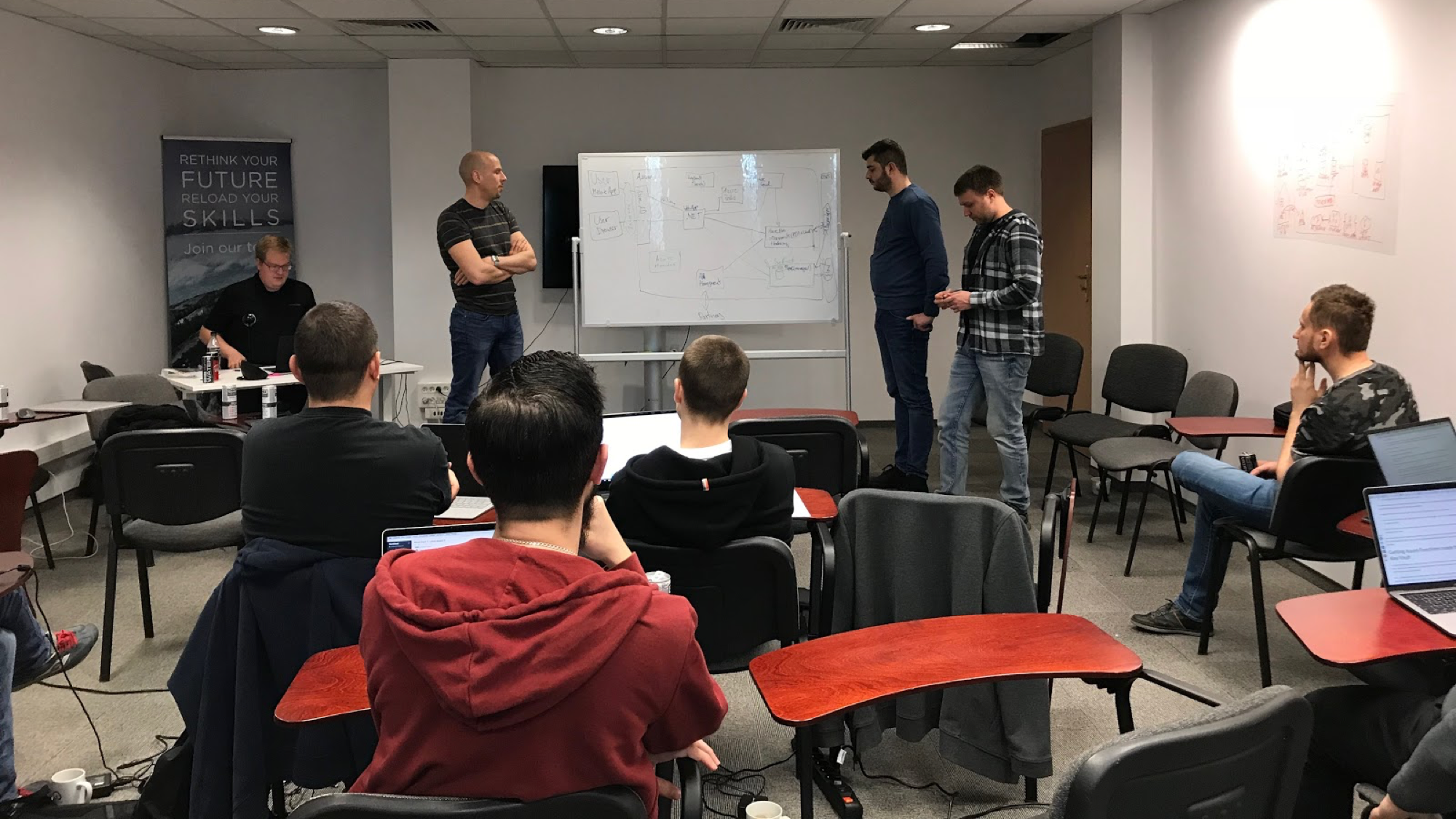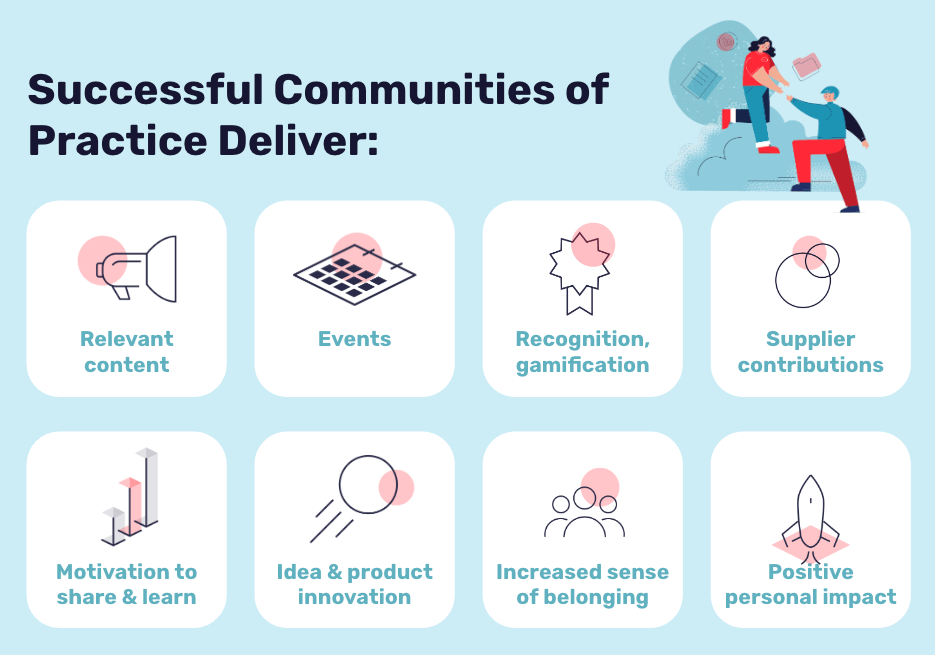
Turbocharge your CCoE with Communities of Practice
Establishing a Cloud Centre of Excellence (CCoE) is a fundamental milestone on most cloud journeys.
Successful cloud adoption requires changes to the people, processes and platforms used by an enterprise to manage its technologies.
Therefore, 5 key functions of a CCoE are to:
1. Define standards, platforms and working practices which accelerate cloud adoption
2. Transition governance and accountability models to work with the cloud
3. Manage supplier relationships for favourable commercial terms, and more
4. Provide expert advice to application teams to enable transformation
5. Establish robust security policies and guardrails tailored to the new technologies
As a cloud adoption programme gathers momentum, CCoEs often face the challenge of scaling up to meet growing demands.
As the CCoE remit grows, so does the risk of a “brain-drain” when the cloud programme reaches a steady state and consultants move on. The key to mitigating this risk lies with engaging the technology practitioners to learn organically during the migration and adoption phases.
Why hands-on experience is an untapped resource
When seeking to learn about the cloud, we are often overloaded with messages about “Best Practice” from service providers and consultants.
With so much information, it can be hard to see what is relevant.
Often, the practical application of technologies within the organisation’s context is what ultimately achieves results. The source of this valuable knowledge is inside a company’s engineering teams who have learned by experience. This is a precious resource which can remain hidden and under-utilised, especially in large, distributed enterprises.
Often, the practical application of technologies within the organisation’s context is what ultimately achieves results. The source of this valuable knowledge is inside a company’s engineering teams who have learned by experience. This is a precious resource which can remain hidden and under-utilised, especially in large, distributed enterprises
As the pioneers and early adopters come to grips with life in the cloud, their know-how and solutions become valuable to the colleagues who follow in their footsteps. Furthermore, as cloud products are constantly evolving, the initial setups may need to be revisited with experience from other teams.
Innovation is all around us. Life-long learning is vital to keep up with change at cloud-speed. The question is, how can you harness this untapped source of expertise and support your teams to learn organically?
What is a Community of Practice (CoP)?
A Community of Practice (CoP) is a group of people with a common “craft” who come together to discuss, share and generate ideas to achieve common objectives. Well-known examples include the Opensource community and the FinOps Foundation.
There are also countless other successful groups which have formed around specific technologies like Salesforce and SAP, sports and social groups.
While they can take many forms, 3 core ingredients include:
- People with a common interest who are motivated to participate, regardless of organisational hierarchies
- Sharing, dialogue and interactions which build an actionable body of knowledge
- A shared passion for what they do and learning how to do it better
How is it different from a CCoE?
While CCoEs provide authoritative thought leadership and organisational stability, CoPs provide the channel for personal engagement for practitioners doing the work. Communities are also a valuable feedback channel to keep the CCoE in touch with the reality on the ground – to stay relevant and avoid the risk of becoming an ivory tower.

Based on Allan, B. (2008). Knowledge creation within a community of practice.
What do successful CoPs all have in common?
Communities can start and flourish with or without a digital workspace, however the focus should be on enabling active and engaged individuals over sophisticated platform features.
Basic messaging and file sharing, for example MS-Teams or Slack, are fine to get the conversations started.
Digital workspace “community” platforms, for example Kahootz, OpenSocial and Hivebrite support a far richer user experience and provide better structures for making the content more useful over time.
The key to sustained success is ensuring that the community gives its members something that they cannot get elsewhere.

Scaling Cloud Success
See how we helped NHS England’s CCoE scale cloud across the National Health Service.
Successful CoPs deliver:
- Content relevant to their organisation, objectives or pain points
One of our clients recently shared they felt overwhelmed by cloud product marketing yet unable to find information that was relevant to their context
The CoP ground rules established a clear relevance filter for content. This approach has been reinforced by the community leaders’ selection of content and guest speakers
- Events to attract membership, increase relevance and start discussions
In practice, we have worked with client-side community leaders to organise regular live events, such as discussion panels, show & tells, drop-in groups
This has helped build relationships amongst members with similar interests
- Recognition of contributors, either informally or through gamification
Social recognition provides an incentive for people to participate in a community. In practice, this meant regular recognition of active contributors in the periodic bulletins
- Eliciting of relevant contributions from suppliers
Forums can also be augmented by eliciting relevant contributions from suppliers, opening a direct channel of engagement for product/ technical enquiries or discussions. Nordcloud has assisted one enterprise to enlist the cloud service providers to run a programme of cloud enablement education events for their staff. We invited the suppliers to join the community, with the understanding that they had to comply with community ground rules, in particular, no selling or marketing
An effective community generates value by harnessing the practical knowledge of the collective. In practice, they are a valuable tool to unlock value

5. Motivation for colleagues to share and learn from each other
Colleagues can debate, co-create and feed back into the community
One de-centralised enterprise client we helped was able to connect teams at the beginning of their cloud journey with more experienced practitioners to accelerate their progress
6. Generation of ideas or products which can be reused across the enterprise to accelerate outcomes
This is often done by informal teams. Examples of public communities include the Open Source Initiative and the FinOps Foundation. In an enterprise context, successful communities evolve into an “inner sourcing” model to share and re-use products such as infrastructure-as-code modules. Nordcloud has worked with several global enterprises to define reusable software assets
7. Increased employee engagement and sense of belonging
Community participation is an opportunity to do something beyond the “day job”, help others to succeed and get recognition for your ideas.
Focus group feedback on a recent CoP initiative revealed that the community helped to partly overcome a growing sense of isolation in their roles as Cloud champions
8. Positive impact on a personal level
Finally, we also see accelerated learning, increased personal visibility and more opportunities for career development. People who share relevant information on communities are often perceived as more collaborative and proactive than those who don’t
Your Community of Practice will take on various shapes as it evolves over time, so be prepared to change. The most important thing is to have one or more community leaders who listen, review and adapt to changing circumstances to ensure your CoP continues to deliver long term value.
So how can you get started with a CoP?
Move quickly, start small and then grow your CoP.
Identify enthusiastic contributors, start the conversation, then promote the community to relevant stakeholder groups. A community sponsor helps give visibility and therefore motivation to contribute.
Your Community of Practice will take on various shapes as it evolves over time, so be prepared to change.
The most important thing is to have one or more community leaders who listen, review and adapt to changing circumstances to ensure your CoP continues to deliver long term value.
Successful communities become self-sustaining over time, however they do require a concerted effort to set-up, build and adapt to best meet member needs.
Nordcloud’s experts support hundreds of organisations on their cloud journey. We believe that purposeful Communities of Practice can turbo-charge your Cloud Centre of Excellence with people power.
Our experts would be happy to discuss how to put this in practice. Let’s get the conversation started. Contact us below, or check our cloud transformation advisory services.
Get in Touch.
Let’s discuss how we can help with your cloud journey. Our experts are standing by to talk about your migration, modernisation, development and skills challenges.


